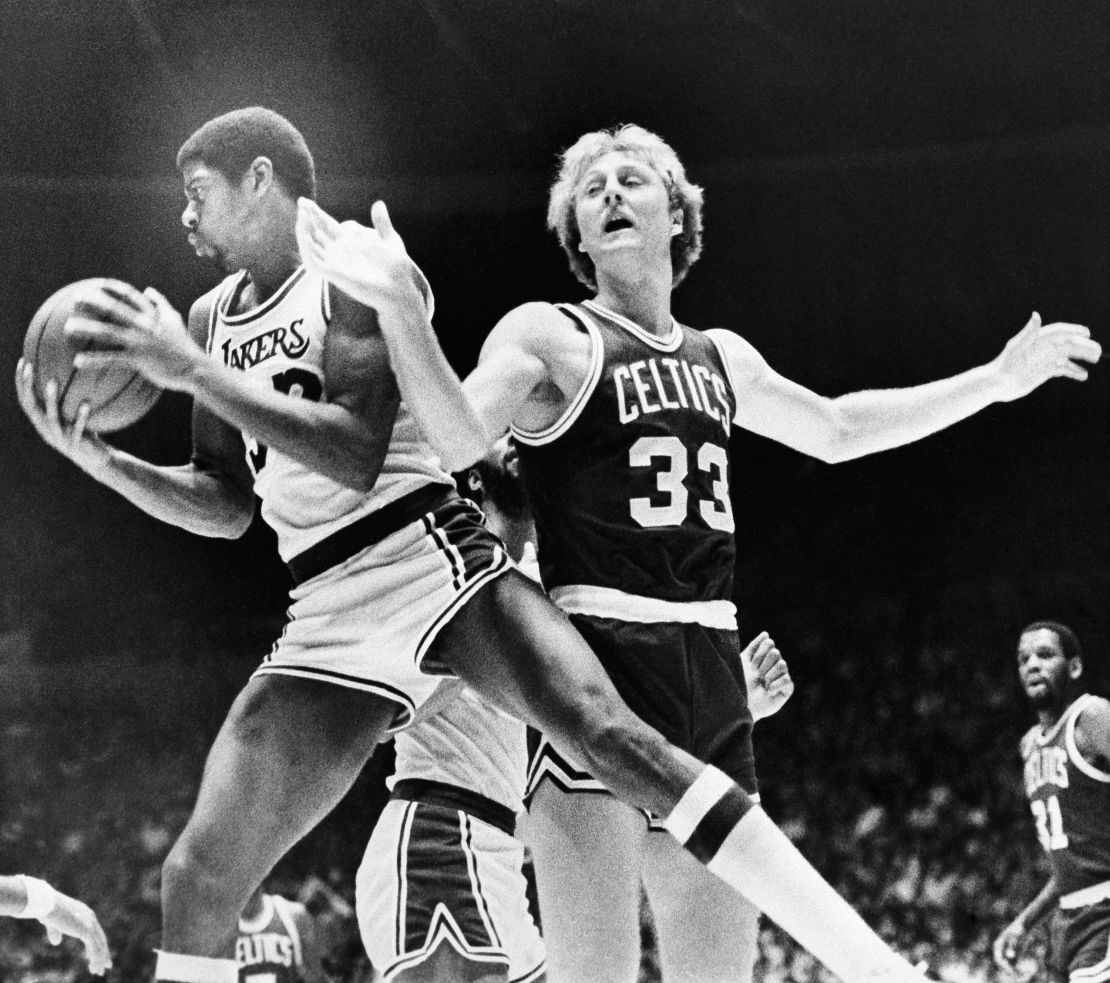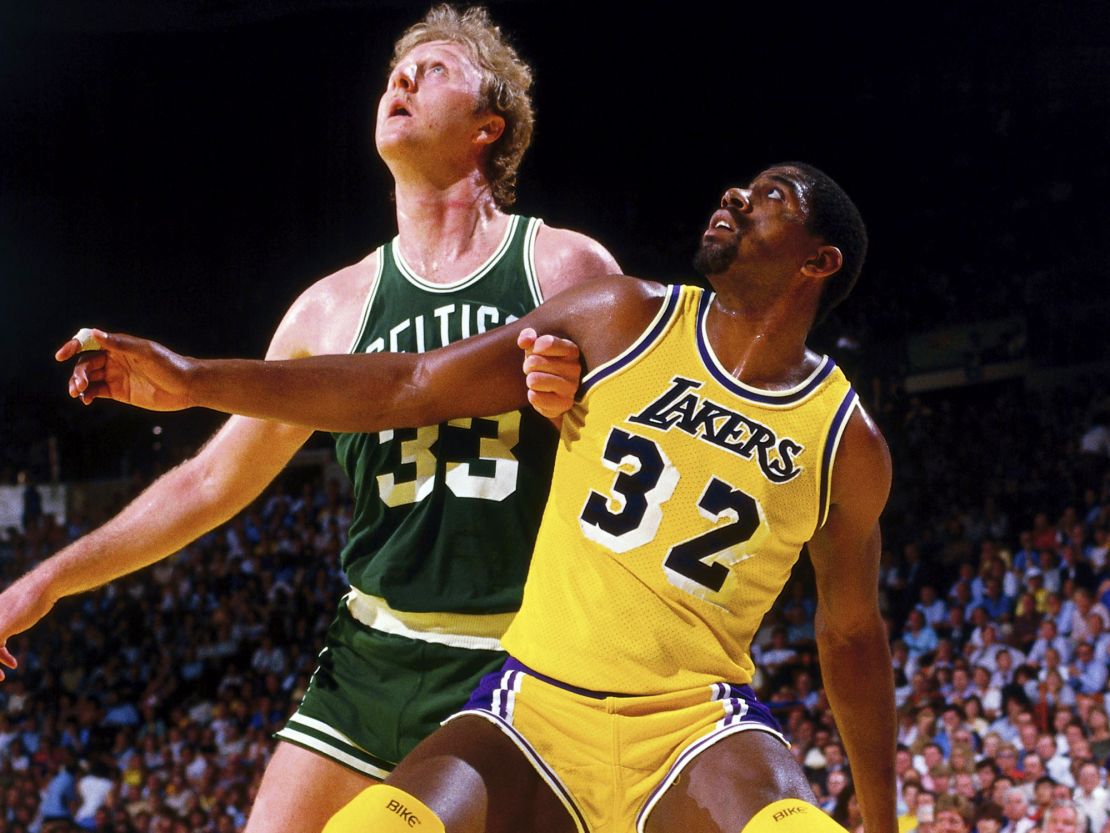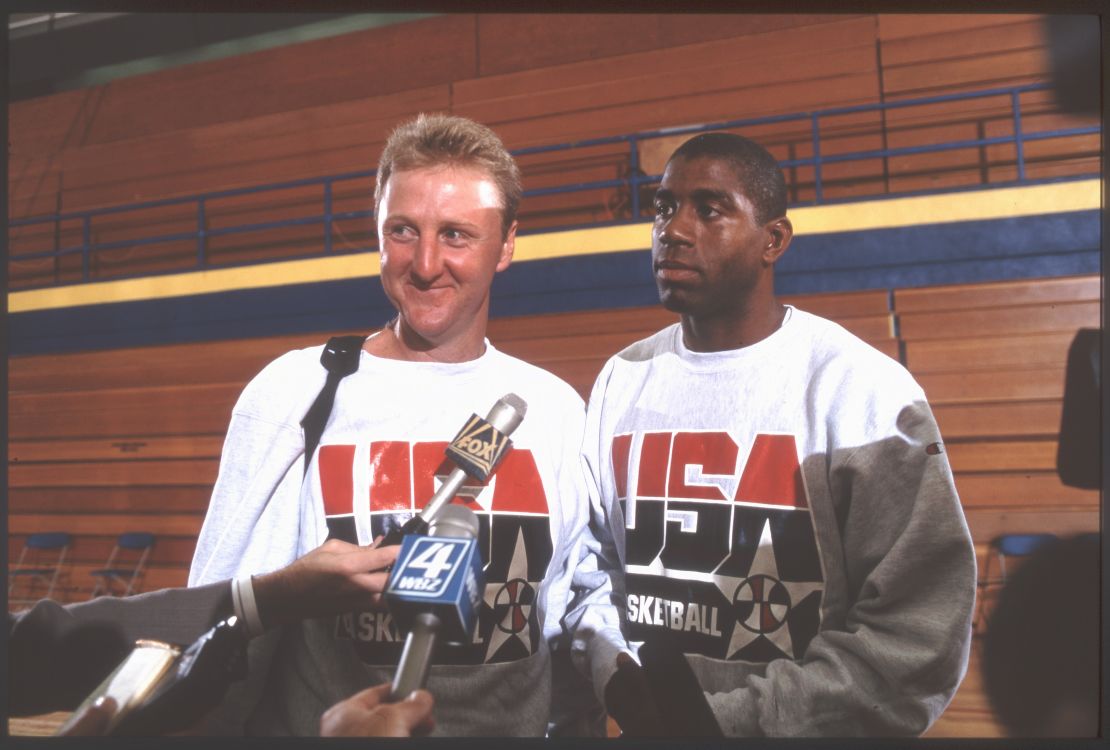In the 1980s, Earvin “Magic” Johnson and Larry Bird were on opposite sides of one of the most heated NBA rivalries.They’ll be sharing 2019’s NBA lifetime achievement award Monday – the first time the league has given the award to two people at once.
The Hall-of-Famers duked it out for NBA supremacy over several seasons in the 1980s and brought more fans to the game in the process, making professional basketball must-see TV.
And their rivalry touched on themes bigger than basketball. The NBA had been a majority-white league up until the 1980s, Doug Merlino wrote in his book “The Crossover: A Brief History of Basketball and Race, from James Naismith to LeBron James.”
With more black players being signed, executives worried no one would watch or support a “black” league, Merlino wrote. Larry Bird’s arrival to the NBA, playing for the Boston Celtics, led some to call him “the great white hope.”

Johnson and the Los Angeles Lakers were seen as the “black team,” while Bird and the Celtics were seen as the “white team,” Merlino wrote. The fact that both players were on two NBA dynasty teams on opposite coasts also played a role in the rivalry.
That combination of race, geography, stardom and the overall need for a championship created a great television experience for fans.
“Not only were the duo part of the illustrious Boston Celtics and Los Angeles Lakers rivalry, but they also constituted arguably the greatest one-on-one player rivalry in the history of the NBA,” the league said on its website.
The rivalry began before Johnson or Bird went pro
The duo faced off in their first championship as college athletes in 1979.
Johnson and the Michigan State Spartans went on to defeat Larry Bird and the Indiana State Sycamores 75-64 in the NCAA Championship. Johnson was named MVP.
Bird said in a 2010 documentary that the game was “the toughest loss I ever took,” according to the NBA.

Bird was also drafted first as the sixth overall pick by the Boston Celtics in the 1978 draft, but he didn’t play until he graduated from Indiana State in 1979.
Johnson was the first overall pick by the Los Angeles Lakers in the 1979 draft. One year after being drafted, a 20-year-old Johnson became the youngest and first rookie named NBA Finals MVP.
That same year, Bird was named NBA Rookie of the Year.
Johnson and Bird were socially polar opposites. Bird was quiet and reserved, while Johnson had a huge personality. Their high profile as star players on the Lakers and the Celtics would invite that comparison between them and emphasized their contrasts.
During the 1980s, the Lakers went to the finals seven times and won four NBA titles. The Celtics went to the finals five times and won three titles.
In total, Johnson and Bird met in the finals three times, in ’84, ‘85 and ‘87. Johnson and the Lakers took home two of those championships.
Their stories became entwined
During the ’80s, it became impossible to discuss Johnson without Bird, or Bird without Johnson. And despite the intense rivalry, the two actually became friends in 1984, while shooting a Converse shoe commercial.
They went on to play on the legendary “Dream Team” that won the gold medal in the 1992 Olympics in Barcelona.

The two even followed similar post-NBA paths, with Johnson becoming involved in Lakers’ behind-the-scenes operations and Bird going back home to Indiana to coach the Pacers and then act as the team’s president of basketball operations.
Their rivalry has inspired books, Broadway plays, and, most recently in 2017, a three-part documentary on ESPN called “Celtics/Lakers: Best of Enemies.”
“Your rival can bring out the best in you and also can make you a better player. Larry Bird did that for me. I would hope and I would think I did that for him,” Johnson told CNN in 2012.
The fact that the two will serve as the first co-recipients of the league’s lifetime achievement award proves they’re inseparable.




